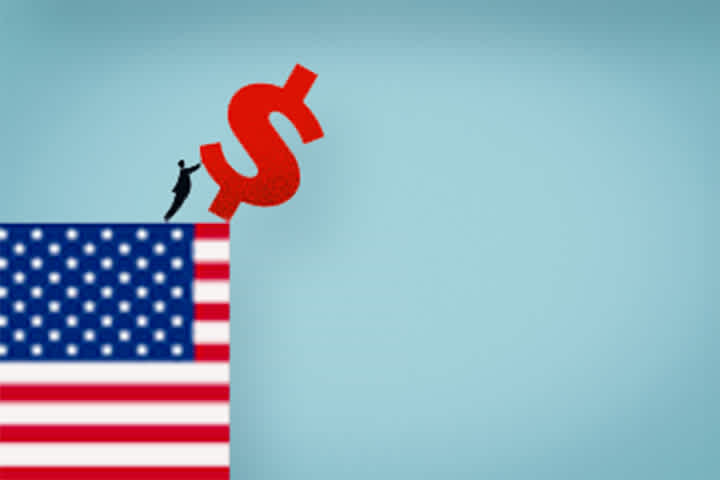How do elections affect the stock market?
Keytrade Bank
keytradebank.be
January 18, 2024
3 minutes to read
2024 is not just any election year. It’s the election year. Never before were so many voters expected to turn out and vote as this year. Taken together, the more than 70 countries where elections will be held represent about 49% of the world's population. They include eight of the ten countries with the biggest populations: India, Bangladesh, Pakistan, Indonesia, Russia, the United States, Brazil and Mexico. If there’s one thing investors dislike, it’s uncertainty. And elections are a source of nothing but uncertainty. Those who take over determine both the policy within their own country, and also the geopolitics abroad. With national elections in some of the world’s largest economies – the US, India and (probably) the United Kingdom – there is quite a lot at stake for the future. But is there also a lot at stake for the stock market?
Let it be …
When elections are on the horizon, we often hear that they will be "the most important in our lifetime". In many ways, an election can feel like a pivotal moment, because the person who wins the day will set the agenda. Precisely because this feels like something important, it is logical for investors to assume that the outcome will have a major impact on the financial markets. After all, each party has its own agenda and will have plenty of proposals on how to address important issues. Changes to taxes, regulations and government spending can all have an impact on investments and consumption. Whether you agree or disagree with the plans, it is logical to feel tempted to make changes to your own portfolio in order to either benefit from, or protect yourself against the market movements you expect as a consequence of an election result.
On the wrong foot
One theory that regularly comes up is that markets predict the outcome of certain events, such as elections. This is also known as the "wisdom of the crowd" principle. To explain this theory, let’s take a step back in time. In 1906, statistician Francis Galton visited a cattle market where a competition was held. 800 people were given the chance to guess the weight of an ox. After analysing all the individual estimates, Galton found that the median was extremely close to the true weight of the ox (less than 1% difference). This illustrates how the collective estimation of a large group of people can often be surprisingly accurate.
The theory is fun, but not very useful. A livestock market is not the same as a stock exchange. Estimating the weight of an ox is not the same as predicting the next president and trying to translate that result into stock market prices. As a result, practice shows that investors are no better than opinion polls at predicting election results. Not even when it comes to the most closely studied elections in the world, with the highest media profile: the US presidential elections. Hillary Clinton’s chances of winning the 2016 elections were estimated at 70 to 99 percent. Even investors who predicted the outcome correctly and adjusted their portfolios were wrong-footed: in 2016, the general consensus was that a Trump victory would be destabilising for investors. Ultimately, his election led to a rally in the markets – helped by tax cuts and flexible fiscal policy.
Volatile in the short term
An additional consideration: as elections come with a dose of uncertainty, it is almost intuitive to assume that they will have a negative impact on stock market performance. The impact of elections is generally more noticeable in the short term, with markets responding to the immediate uncertainty and speculation about the outcome. This reaction can show up as increased volatility and short, sharp fluctuations in share prices. However, once the dies are cast and the new policy direction becomes clear, markets will often stabilise again. Exiting before the elections and then re-entering: does not really make sense.
Historical data for the US (which covers 40% of global market capitalisation) suggest that election years are not necessarily synonymous with stock market slumps. In the 24 election years since 1928, the S&P 500 finished up 20 times and was in the red a mere 4 times. The average return during election years was as high as 11.58%. This is well above the average yield of 9.81% for the S&P 500 across all years since 1928. So while markets can be more volatile in the run-up to elections, especially when the outcome is unpredictable, the long-term returns on equities, bonds and other investments are driven more strongly by economic and corporate fundamentals. The link between stock market performance and election results is therefore generally not particularly relevant for investors.
Choose your focus?
It is also important not to attach too much value to the candidates’ policy outlines for your investments. There are often differences between the proposals put forward during a campaign and the actual policy changes that take place once the candidate is sworn in. It is unlikely that a new government or president will be able to achieve exactly what he or she advocated during the election campaign. Of course, the impact may vary from one sector to another. For example, did technology companies react to a particular election result differently to the energy or healthcare sectors? However, this nuance may be more relevant for investors with a sector-specific focus.
Uncertain about the impact of elections?
Consider investing regularly. This allows you to spread your investments across different sectors and over time.


